The day has come. The day for a long-awaited homecoming. The day for the inauguration of the Ram Mandir in Ayodhya. The day when finally, after all the wait, after all the controversy and everything in between – Ram Lalla is coming back home.
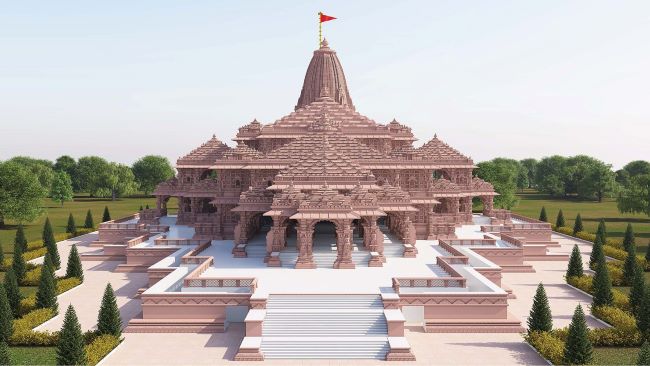
As the sacred doors of the Ram Mandir Ayodhya swing open to the public with the Pran Pratishthan: revealing not just a magnificent architectural achievement, but something beyond all rationality.
People in thousands have already arrived in this sacred location and are waiting for the moment they get the divine sight of the revered idol of Ram Lalla, whose journey from obscurity to the sanctum sanctorum is a tale woven with threads of history, controversy and a relentless spirit of billions of people.
And today, as this auspicious occasion has come upon us, we unravel the intricate tapestry of the temple’s as well as the Ram Lalla history, shedding light on the idol’s discovery within the Babri Masjid, the complex web of events that led to this day and the spiritual renaissance encapsulated in the lifting of Goddess Sita’s age-old curse against Ayodhya.
This is not a story of how the temple got built, but a story about a 5-year old child who, wrongly expelled from his own house, found himself standing before the court to, ultimately, return back home.
An Unlikely Protagonist
Amidst the city’s echoes and ancient hymns, we unfold a chapter that goes beyond the mere construction of a temple.
This is not just a narrative of bricks and mortar, but a poignant tale which begins a few decades ago.
It was in midnight, on December 22, 1949 that we first get a glimpse of our story’s protagonist: Ram Lalla.

Sitting quietly, inside the central dome of the Babri Masjid, was found a 5-year old Rama. The circumstances surrounding his discovery remain shrouded in mystery and controversy.
Some accounts suggest he was found during an unauthorized entry into the mosque, while others claim that it was nothing short of a miracle.
News of the appearance of Ram Lalla spread rapidly, captivating the attention of the locals and sparking both reverence and dispute.
While the devotees saw it as a divine intervention and a signal to reclaim the land for the construction of a Ram Temple. This was the first time when this idea came into being in the minds of citizens and devotees.
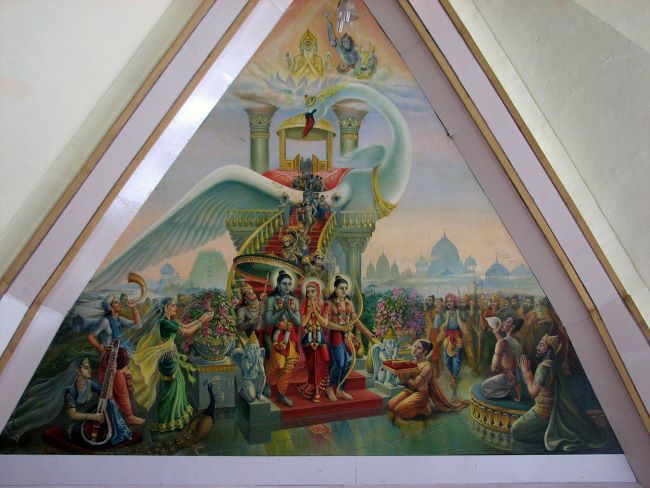
But on the other hand, the Central and State Governments were not very excited with what has happened. Many sources said that the governments actually wanted the child removed from the Babur Masjid in order to maintain communal harmony in the country.
However, one man stood against this decision and warned the authorities that doing such an act would only prove to be catastrophic. This man was the District Magistrate of Faizabad: Mr. K.K. Nayar, whose will ultimately prevailed and Ram Lalla remained within the premises even though the compound was locked away.
Later, on the 19th January of 1950, an injunction was issued that restrained the government bodies from removing the idol, which was affirmed five years later by the High Court.
Permission to conduct worship was also granted, although the inner courtyard remained locked.
And that is when the struggle for Ram Janmabhoomi became dormant for the next three decades!
The Courtroom Drama
As time unfolded, so did the unfolding drama of justice.
The divine innocence of Ram Lalla faced the earthly scrutiny of legal proceedings.
The court became an unlikely stage where the fate of a deity hung in the balance, as the 5-year old deity stood before human tribunals, his divine presence casting a unique hue of the legal structure.
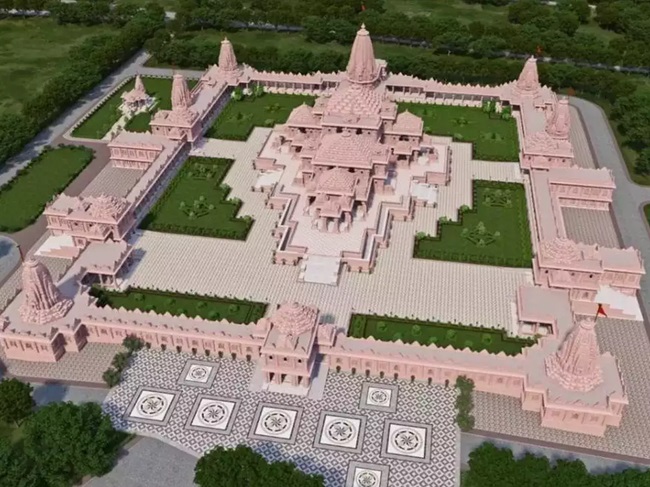
Legal minds grappled with matters which were beyond the ordinary, navigating the delicate intersection of faith and jurisprudence.
Ram Lalla stood at the court, represented not just by lawyers but by the collective hopes and dreams of a billion souls.
Witnesses, historians and theologians presented their own perspectives one by one as the days turned into months and the months turned into years.
The arguments echoed beyond the halls of the courtroom, each point and counterpoint resonating with the profound significance of the case. It was not a battle for legal victory anymore, but of a spiritual legacy that traversed millennia.
After almost 7 decades of disputes, fights and arguments in the courtroom, the legal proceedings reached their climax on 9th November, 2019.
The Divine Architecture
Beyond being a place of worship, envisioned to honor Lord Ram, this architectural marvel captivates the senses and tells a story that spans centuries.
Here are the major features of the Ram Mandir architecture:
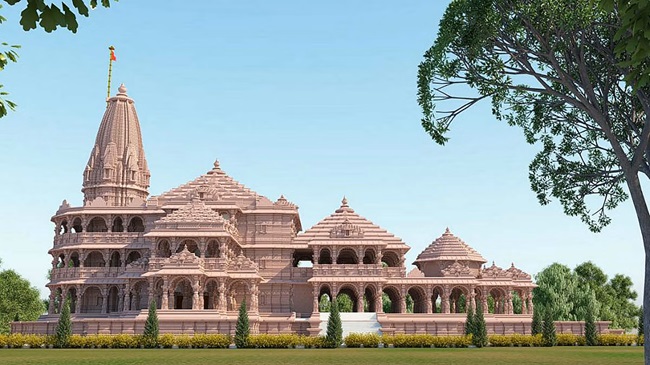
Traditional Roots, Modern Design
The design of the Ram Mandir pays homage to India’s rich heritage, drawing inspiration from the traditional temple architecture.
Still, it is not a mere replication of the past, but the architects involved have skillfully added modern engineering techniques to ensure the structural integrity of the temple.
Symbolic Elements
Each corner within the temple is infused with symbolism that reflects the spiritual narrative of the epic Ramayana.
Grand domes rise to the heavens, symbolizing celestial realms, while intricate sculptures narrate the epic saga of Lord Ram.
Craftsmanship and Artistry
The wall bricks through which the temple has been curated, are said to arrive from different parts of the country as well as from a few international countries like Indonesia, Sri Lanka and Thailand with “Jai Shree Ram” written over them in local languages.
People and devotees have sent it to Ayodhya via post and mails and whatnot showing their own devotion and happiness for this divine creation.
A Living Heritage
The Ram Mandir, as an architectural marvel, not only stands as a place of worship but also a living heritage. It preserves and celebrates the architectural traditions of India, while simultaneously embracing innovation.
The overall design of the temple is a reflection of the enduring spirit of a culture that continues to evolve while honoring its timeless roots.
The Homecoming
The entire world watched with bated breath as the judgement from the Supreme Court was announced. A judgment which wasn’t just about land ownership; but about the recognition of a divine presence, and a celebration of an innocent child… coming back home!
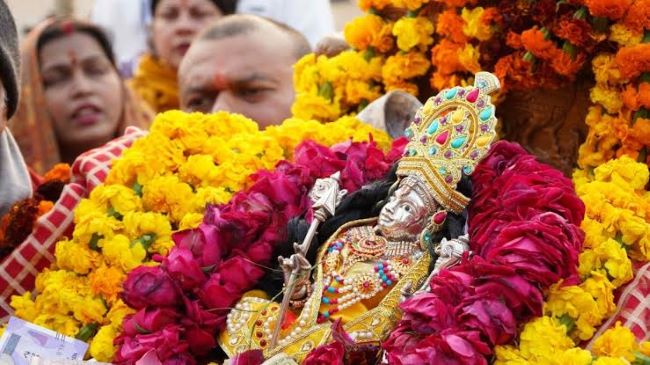
Ram Lalla, the 5-year old who stood at the center of all this legal drama, hundreds of disputes and whatnot, emerged victorious.
Many believe that the age-old curse of Goddess Sita, laid upon Ayodhya, lifts today as the divine saga reached its zenith.
And then, the moment every soul waited for – arrived. Against all the odds and complexities, Ram Lalla returns home today: on 22nd January 2024.
Conclusion
As the dust settles and the temple opens up for devotees to come and witness and experience, Ayodhya echoes with a collective sigh of relief, joy and spiritual rejuvenation.

The story of Ram Lalla’s journey from exile to adulation is not just etched in stone but imprinted in the hearts of those who witnessed the grand homecoming – one that transcends time, resonating with the eternal melody of devotion.
Share this blog with everyone you know.
Comment down below your thoughts on the inauguration and Ram Lalla finally getting his long awaited homecoming.
Jai Shree Ram!




